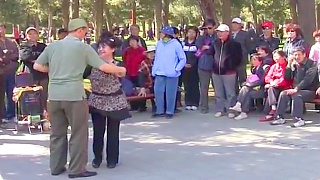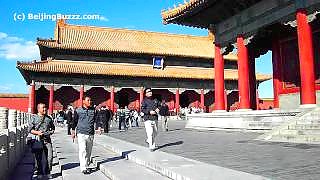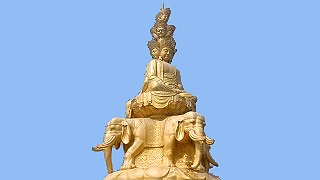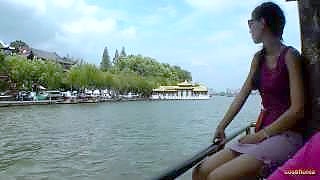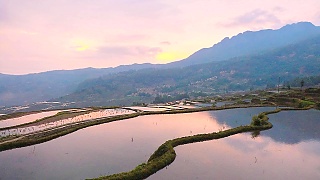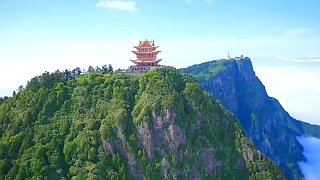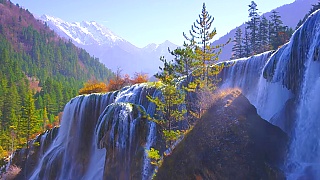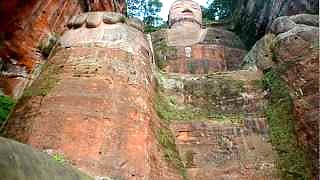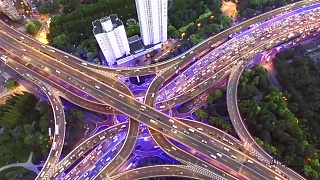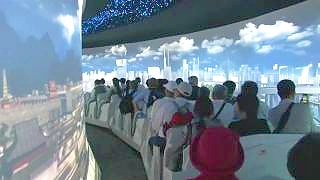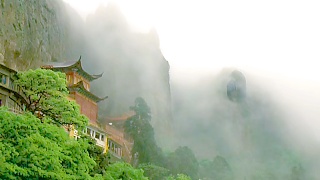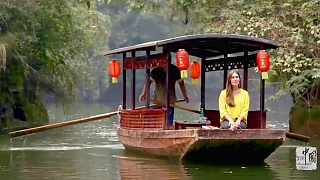The Ming Tombs are a collection of mausoleums built by emperors of the Ming dynasty. They lie within the ChangPing District of BeiJing Municipality, 40 kilometers (25 miles) north-northwest of Beijing city center.
The site was chosen based on the principles of Feng Shui by the third Ming emperor, YongLe. Construction began after completion of the Imperial Palace (Forbidden City) in 1420. Subsequent emperors placed their tombs in the same valley; 13 in total.
The siting of the Ming dynasty imperial tombs was carefully chosen according to Feng Shui principles. A key guide is that bad spirits and cold winds from the north must be deflected; therefore, an arc-shaped valley area at the foot of the JunDu Mountains was selected. This 40 square kilometer area, enclosed by mountains in a pristine, quiet valley with dark earth and tranquil water became the necropolis of the Ming dynasty.
A 7 kilometer (4 mile) path named the Spirit Way, or Sacred Way, leads into the complex, lined with statues of guardian animals and officials, with a front memorial gate consisting of three arches called the Great Red Gate; constructed in 1540, it is one of the biggest stone archways in China.
Further in, lies the ShenGong ShengDe Stele Pavilion with a 50 tonne stone statue of BiXi carrying a memorial tablet. Four white marble HuaBiao (pillars of glory) are positioned at each corner of the pavilion; at the top of each is a mythical beast. Then come two pillars on each side of the path, whose surfaces are carved with a cloud design, and tops are shaped like a cylinder; these are of a traditional design and were originally beacons to guide the soul of the deceased, The path leads to 18 pairs of stone statues of mythical animals, which are all sculpted from single blocks; these are all larger than life size. After, the path leads to a three-arched gate known as the Dragon and Phoenix Gate.
Two of the mausoleums are open to visitors, but it is the beauty of the valley, with orchards, and the sheer scale of the area used for the tombs, that make this a nice day out in the countryside.
[640],shadow=true,start=33,stop=Beijing, the capital city of China, is a vibrant metropolis steeped in history, culture, and modernity. Here's a brief overview of what you can expect as a tourist in Beijing:
Historical Landmarks:
The Great Wall of China: One of the most iconic structures in the world, the Great Wall is easily accessible from Beijing. Mutianyu and Badaling sections are popular among tourists.
Forbidden City (Palace Museum): A UNESCO World Heritage Site, this vast imperial palace complex was home to Chinese emperors for over 500 years. It houses numerous halls, courtyards, and historical artifacts.
Temple of Heaven: A masterpiece of Chinese architecture, this ancient temple complex served as a place of worship for emperors to pray for good harvests.
Summer Palace: A stunning ensemble of lakes, gardens, and palaces, the Summer Palace served as a retreat for emperors during the Qing dynasty.
Tiananmen Square: One of the largest city squares in the world, Tiananmen Square is flanked by important landmarks such as the Monument to the People's Heroes, the Great Hall of the People, and the Mausoleum of Mao Zedong.
Cultural Sites:
Beijing Hutongs: Explore the narrow alleyways and traditional courtyard residences of Beijing's historic neighborhoods. You can take a rickshaw tour or simply wander around on foot.
Beijing Opera: Experience traditional Chinese opera performances at venues like the Liyuan Theater or the Chang'an Grand Theatre.
798 Art District: A hub of contemporary art and culture, this former industrial area is now home to numerous galleries, studios, and cafes.
Modern Attractions:
Olympic Park: Visit iconic structures such as the Bird's Nest (National Stadium) and the Water Cube (National Aquatics Center) from the 2008 Beijing Olympics.
CBD (Central Business District): Marvel at the futuristic skyline of Beijing's modern business district, which includes landmarks like the CCTV Headquarters and the China World Trade Center Tower III.
Culinary Delights:
Peking Duck: Indulge in Beijing's most famous dish, crispy roast duck served with pancakes, scallions, and hoisin sauce.
Street Food: Explore the city's vibrant street food scene and sample local delicacies like jianbing (savory crepes), lamb skewers, and dumplings.
Practical Tips:
Transportation: Beijing has an extensive public transportation system, including the subway, buses, and taxis. However, traffic can be heavy, so plan your travels accordingly.
Language: While English is not widely spoken, especially outside tourist areas, many signs and transportation announcements are in English. It's helpful to carry a translation app or a phrasebook.
Weather: Beijing experiences four distinct seasons, with hot summers and cold winters. The best times to visit are spring (April to June) and autumn (September to October) when the weather is mild and comfortable.
Etiquette: Respect local customs and traditions, such as removing your shoes before entering someone's home and using both hands to pass or receive items.
Beijing offers a rich tapestry of experiences for tourists, blending ancient heritage with modern innovations. Whether you're fascinated by history, culture, or culinary delights, there's something for everyone in this dynamic city.
 The Spirit Way, Ming Tombs 明十三陵, BeiJing
The Spirit Way, Ming Tombs 明十三陵, BeiJing